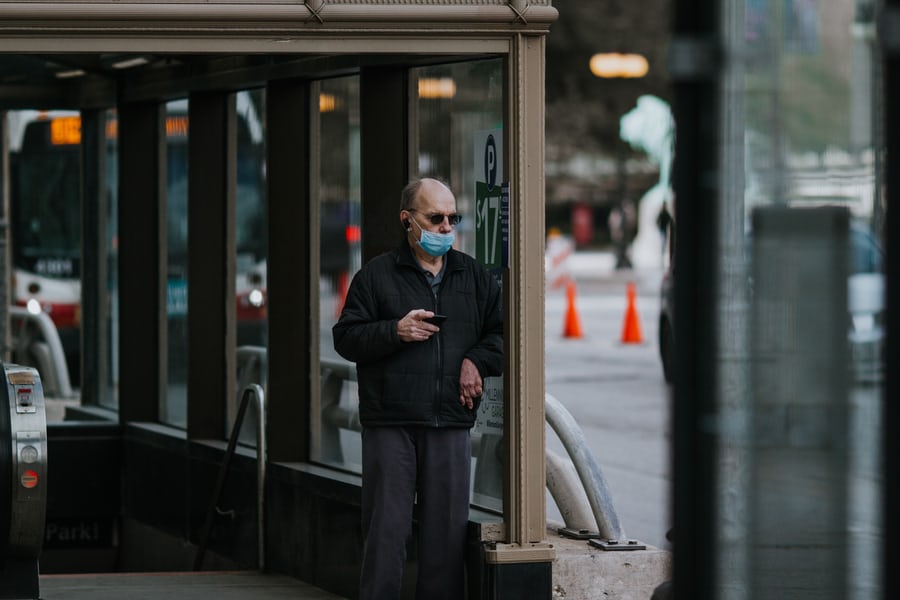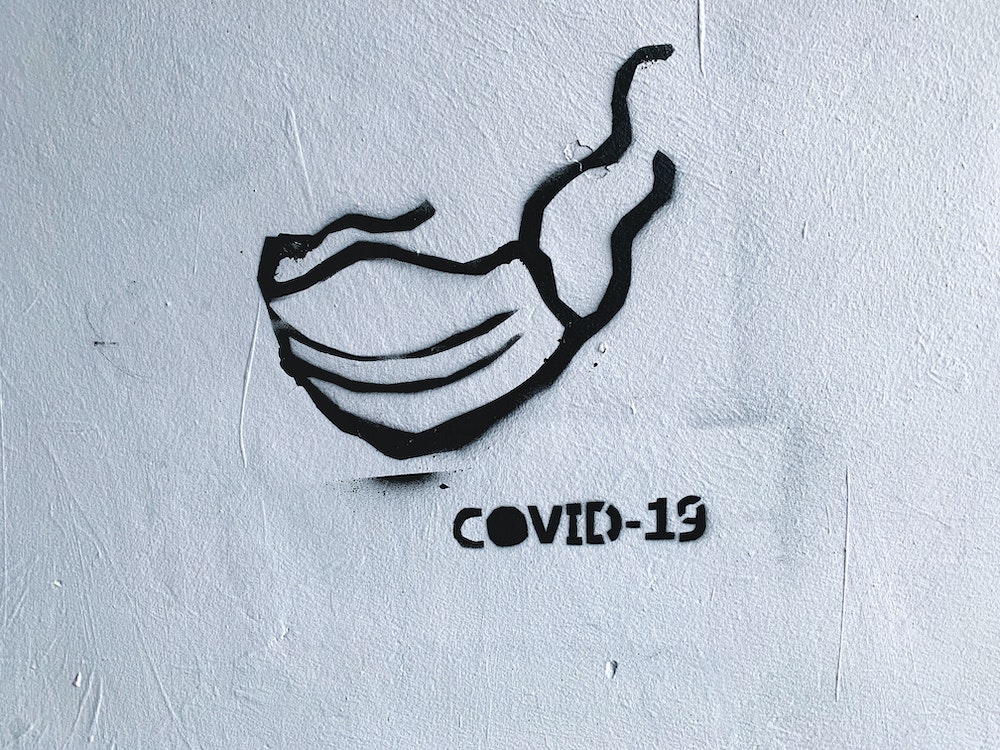This week’s top three summaries: R v Duncan, 2020 BCSC 590, R v Ralf, 2020 ONCJ 230, and R v DD, 2020 ONCJ 218
R v Duncan (BCSC)
[April 16, 2020] Judicial Interim Release – Secondary Ground – COVID-19 - 2020 BCSC 590 [The Honourable Justice Kent]
AUTHOR’S NOTE: Here, the accused brought an application for a detention review pursuant to s. 525. He had been detained in custody for about 10 months in relation to three B&E’s and various non-appearances or breaches of bail conditions. When analyzing the secondary ground, Justice Kent concluded that the proposed release plan satisfactorily addressed public safety concerns. However, Justice Kent stated that the COVID-19 concerns would have tipped the balance in favour of release if it had been necessary
Pertinent Facts
[1] The accused, Mr. Duncan, is before this Court for a detention review hearing pursuant to section 525 of the Criminal Code, R.S.C. 1985, c. C‑46 [Criminal Code]. He has been in custody since June 14, 2019, essentially ten months to the date of this decision.
[2] Mr. Duncan’s detention in custody relates to multiple alleged offences, the first of which was breaking and entering (“B&E”) into a dwelling house and committing theft therein contrary to section 348(1)(b) of the Criminal Code, an event which allegedly occurred on November 30th, 2017, some 28 months ago.
[3] Subsequent alleged offences with respect to which Mr. Duncan has been charged include two further B&E’s, failing to report and attend court, and mischief (willful damage to property at the North Fraser Pre-Trial Center). He was initially released on bail subject to increasingly restrictive conditions on three separate occasions. Finally, on October 11, 2019, at Mr. Duncan’s fourth bail hearing before the Provincial Court, he was ordered into custody. At that time, he was confronting no less than seven Informations including a total of three B&E’s and various non-appearances or breaches of bail conditions.
[4] Since Mr. Duncan has been in custody in excess of 90 days and remains detained on three separate Informations (the other four have since been resolved by way of guilty pleas or a stay), he now applies for a detention review pursuant to section 525 of the Criminal Code. At this detention review hearing Mr. Duncan asks this Court to release him on bail—this time invoking the prospect of a COVID-19 pandemic in jails, amongst other grounds. This is Mr. Duncan’s fifth bail hearing.
Position of the Parties
[29] Counsel for Mr. Duncan argues that new evidence combines with a change in circumstances to warrant a re-visiting and reassessment of the restrictive and supervised treatment program at VisionQuest as a viable and proportionate alternative to Mr. Duncan’s continued detention. These new circumstances and evidence includes the updated Gladue report which recommends VisionQuest as a possible alternative treatment program, additional information regarding the specifics of VisionQuest’s culturally relevant programming and high level of supervision, and the elevated risk of exposure to COVID-19 in a jail/detention centre setting. Counsel for Mr. Duncan also proposes a cash deposit of $500, a modest sum for many but the only amount that Mr. Duncan can put together and which represents “the most restrictive form of bail on the Antic ladder”.
[30] The Crown argues that Mr. Duncan's dismal history of release vividly demonstrates his incorrigibility and the inability for him to be managed in the community through a bail regime. While acknowledging that the health risks of COVID-19 are an important consideration, the Crown submits that there is no evidence that the correctional authorities are not taking appropriate steps to respond to the epidemic. According to the Crown, Mr. Duncan's proposed release plan is simply insufficient to allay very valid concerns for the protection and safety of the public. The Crown asks that Mr. Duncan's application for bail be dismissed.
Secondary Ground and COVID-19
[39] There also remains the question of the COVID-19 pandemic. Much of the case law that has developed thus far on this subject deals with the tertiary ground for detention. However, there are an increasing number of cases which have held that the risk of infection posed to inmates while incarcerated in detention centers awaiting trials is also a valid factor when considering the secondary ground for detention specified in section 515(10)(b) of the Criminal Code (see for example, R. v. T.K., 2020 ONSC 1935 at para. 60).
[40] A number of BC cases have held that COVID-19 concerns in the institutional setting will not warrant release from detention in the absence of an adequate release plan: R. v. Yaman, 2020 BCPC 56; R. v. Peters (BCSC, VA 30484W, April 3, 2020); R. v. Leppington, 2020 BCSC 546; and R. v. Pavlik (BCSC, VA 30240W, April 8, 2020). Other cases have held that a satisfactory release plan, combines with COVID-19 concerns, warrants release on bail: R v. Janvier-Charland (BCSC No. KE 91113, April 3, 2020), R. v. Garcia (BCPC, Surrey File No. 236955-1, April 3, 2020), (R. v. Duncan (BCSC, VA30577W, April 8, 2020).
[41] In the present case, there was no evidence presented that the COVID-19 infection has spread to the North Fraser Pre-Trial center. The government is well aware of the risks involved and has implemented a number of measures designed to reduce the spread of the infection in jails. Some of the cases referred to above describe the specifics of the measures taken. Notwithstanding these efforts, however, it must be noted that the medium-security prison in Mission, BC is currently experiencing the worst outbreak of COVID-19 in Canada with 42 prisoners and 6 staff members affected so far, and 7 of those prisoners were in the hospital as of April 14, 2020. It is certainly possible, perhaps even probable, that notwithstanding Provincial and Federal government efforts to reduce transmission, the COVID-19 virus will spread to other institutions including North Fraser Pre-Trial Center.
[42] In this particular case I have already concluded that Mr. Duncan’s proposed release plan satisfactorily addresses public safety concerns. Had it been necessary to do so, I would have relied on COVID-19 concerns to tip the balance in favour of interim release rather than continued detention on secondary grounds.
R v Ralf (ONCJ)
[May 1, 2020] Probation Order – Signature – COVID-19 - 2020 ONCJ 230 [The Honourable Justice Glen Donald]
AUTHOR’S NOTE: Here, the accused received a suspended sentence with 12 months of probation following a guilty plea by audio conference. Justice Donald dispensed with the formality of requiring the accused to sign a copy of the order.
Pertinent Facts
[1] On April 29, 2020, in imposing a suspended sentence with probation I dispensed with the formality of requiring Mr. Ralf to sign a copy of his order and I indicated that I would provide counsel with reasons for this decision. These are those promised reasons.
[6] It is in these circumstances that I accepted an urgent plea, by way of audio conference, from Mr. Shawn Ralf. After hearing submissions, I suspended the passing of sentence and placed Mr. Ralf on probation for a period of 12 months.
[8] There can be no question that, however minimal, there is an increased risk of virus transmission when humans are near one and other. Thus, having Mr. Ralf attend the courthouse to sign his probation order increases the risk that the virus could be transmitted, either way, between himself and the handful of police officers and court staff that he would inevitably have to come into contact with. To be clear, having Mr. Ralf attend the courthouse to sign his order increases the risk, however minimal, both for Mr. Ralf and other courthouse staff.
Formalities of Signing a Probation Order
[9] Having regard to those risks and the provisions of the Criminal Code I therefore dispensed with the requirement that Mr. Ralf attend the courthouse to sign his order. Instead, he will receive a copy of my order at an email address that he provided during the audio conference. Where Mr. Ralf would ordinarily have signed, I typed “No signature required - Covid-19. See transcript”. The copy that Mr. Ralf receives will serve to remind him of the procedures that can be employed to change an optional term of the Order. During the audio hearing, orally, he confirmed his understanding of the terms of the Order, which I had carefully explained to him, by referring to them as “straightforward”. I also warned Mr. Ralf that a breach of his probation order constituted an offence prosecutable by indictment with the risk of jail.
[10] By taking the steps that I did, I was satisfied that I had complied with s. 732.1(5) of the Criminal Code, which reads:
The court that makes a probation order shall
(a) cause a copy of the order to be given to the offender and, on request, to the victim;
(b) explain the conditions of the order set under subsections (2) to (3.1) and the substance of section 733.1 to the offender;
(c) cause an explanation to be given to the offender of the procedure for applying under subsection 732.2(3) for a change to the optional conditions and of the substance of subsections 732.2(3) and (5); and
(d) take reasonable measures to ensure that the offender understands the order and the explanations.
[11] Should my subjective belief as to compliance prove incorrect, I am mindful that s. 732.1(6) provides:
For greater certainty, a failure to comply with subsection (5) does not affect the validity of the probation order.
[12] While I have every confidence that Mr. Ralf understands and will fulfill the obligations that I imposed upon him, I remain mindful about the enforceability of my probation order in the absence of his signature and offer the following observations.
[13] First, the validity of my probation order is not in any way effected by the absence of Mr. Ralf’s signature; there is nothing in the Criminal Code which requires a probation order to be signed by the person whom it governs. The probation order was valid once made. To the extent that his lack of signature could allow Mr. Ralf to argue that he was not aware of his conditions and thus cannot be held responsible for his non-compliance, I suggest that a transcript of the proceedings offers a full answer to those concerns.
[14] Second, the probation order requires Mr. Ralf to report to a probation officer. I suspect that his compliance with this term would afford the Crown with another avenue of “proving the breach”.
[15] Third, the signature on the page has always been somewhat of an illusory method of proving an accused’s awareness of the terms contained in the order. For instance, a claim of illiteracy is not meaningfully defeated by the appearance of a signature on the page. Moreover, prior to Covid-19, absent viva voce evidence, I do wonder how the Crown might prove that the person who signed the probation order was the recipient of the order [Footnote – In St. Thomas, after the order is made, the accused leaves the courtroom to sign the order elsewhere without being asked to meaningfully confirm their identity]. Those concerns can only be heightened given the present manner that sentencing matters are proceeding.
[16] It seems to me that the task of a sentencing judge is to ensure that each individual we sentence understands the restrictions of liberty, obligations and risks, penal and otherwise that we impose through the orders we make. Communication is key. While obtaining signatures may serve to confirm that we have effectively communicated the terms of our orders, the former does not guarantee the latter.
[17] Thus, the while the signature may represent a best practice, satisfied that Mr. Ralf understands the terms of my order, it is unnecessary in this case.
[18] Covid-19 has caused members of our society to reconsider many formalities that were previously of no moment. Like the handshake, the signature is a casualty to the “social distancing”, safety imposed, requirements of the pandemic.
R v DD (ONCJ)
[April 29, 2020] Sentencing – Custodial Sentence – COVID-19 - 2020 ONCJ 218 [The Honourable Justice G.P. Renwick]
AUTHOR’S NOTE: Here, the offender was sentenced after being found guilty of sexual assault in a six day trial. The Crown sought a reformatory jail sentence of 90 days plus three years of probation while the defence proposed an absolute discharge with a peace bond for 12 months. Justice Renwick rejected the defence submissions, determining that a short-sharp period of incarceration was an appropriate sentence. Absent the COVID-19 pandemic, Justice Renwick would have sentenced the offender to 45 days imprisonment plus probation. However, due to the enhanced risks of infenction in an institutional setting, Justice Renwick imposed a conditional sentence for 9 months, followed by 15 months of probation.
Pertinent Facts
[1] Following a six-day trial, I found the Defendant guilty of sexual assault and not guilty of sexual interference and invitation to sexual touching on 14 February 2020.
[10] The prosecutor seeks a reformatory jail sentence of 90 days plus three years of probation and a DNA order and sex offender registration for 10 years.
[11] The Defendant seeks an absolute discharge with a peace bond for 12 months.
Sentencing Analysis
[38] The Defendant seeks one of the most lenient outcomes after a finding of guilt (an absolute discharge and a peace bond), while the prosecutor seeks a short period of incarceration. Although various cases were presented by the parties to justify their submissions, with the exception of Friesen, I did not find the submitted cases helpful.
[39] I have considered and rejected the submission for an absolute discharge. Though it may well benefit the Defendant to receive a discharge, for at least two reasons it is not in the public interest to impose any form of discharge in this matter.
[42] Even a conditional discharge and probation would fail to send the message recently re-iterated by the Supreme Court that the sexual assault of minors by persons in positions of trust is an egregious violation of community norms, parental confidence, and a child’s autonomy and bodily integrity. I leave it to others to determine when a discharge is appropriate for sexual offenders of children, but given all of the circumstances and the prevalence of this offence in our region, a discharge is not appropriate for this offence.
[45] Although the registering of a conviction is generally a significant sanction for a first offender, I find that a suspended sentence and probation would not meet the goals of denunciation and deterrence in this case.
[50] The Defendant has high moral culpability and there is a need for both specific and general deterrence of this behaviour. For all of these reasons, I have determined that a short-sharp period of incarceration is an appropriate sentence for this Offender.
Impact of COVID-19
[52] Obviously, a balance must be struck between the potential risk to the community of releasing offenders who pose a safety threat, and for whom custody is generally appropriate, and the risk of spreading this potentially lethal virus by ordering people into confines which undermine all public health interventions to maintain social distance and reduce the spread of infection.
[53] Neither party adduced any evidence of known COVID-19 cases in provincial reformatories (or any provincial or federal carceral institutions in Ontario) or any evidence respecting the Defendant’s overall health or risk of infection.
[54] I accept that the current crisis in long-term care facilities in Ontario serves as an appropriate proxy for the potential of this virus to harm the inmates of custodial facilities given the reliance on staff who move freely about an institution, the use of central nutritional facilities, the use of communal recreational spaces (and in jails communal bathing areas), and the physical inability to employ social-distancing. If anything, custodial facilities may be worse as inmates are required to share sleeping spaces and bathrooms, and there is likely a far greater flux of admissions and discharges than within long-term care homes. While there may be far fewer cases of COVID-19 in jails reported to date, and certainly fewer custodial-virus-related deaths, this may equally be the result of happenstance or precautions. There is also the possibility that testing in custodial facilities is less frequent than within the broader community, and/or that the media is unaware of the actual number of infected people held at the state’s behest.
[55] So, while it may appear that being imprisoned poses no greater risk of infection than one faces in the community, one thing is certain: congregate living is a potential timber box which can quickly become an incinerator if introduced to a spark.
[56] Given the low-level of violence employed in committing this offence, and the registration of the Defendant as a sex-offender, I am satisfied that the risk of recidivism is fairly low. On this basis, I conclude that it would not endanger the public to have the Defendant serve a conditional sentence of imprisonment, in lieu of institutional imprisonment.
[57] Were it not for the global pandemic, I would have sentenced the Defendant to 45 days imprisonment plus probation. In light of the foregoing, the enhanced risks of infection in an institutional setting, and in recognition of the Defendant’s prior good-character, I am satisfied that the terms of a Conditional Sentence Order, followed by probation, with ancillary orders, will protect the public and meet the need for a strong message of denunciation and deterrence, while promoting a sense of responsibility in the Offender.
Conclusion
[58] D.D. is sentenced to serve a Conditional Sentence of Imprisonment for 9 months, with the following terms …
[60] The Conditional Sentence is to be followed by 15 months of probation, the terms of which are …






